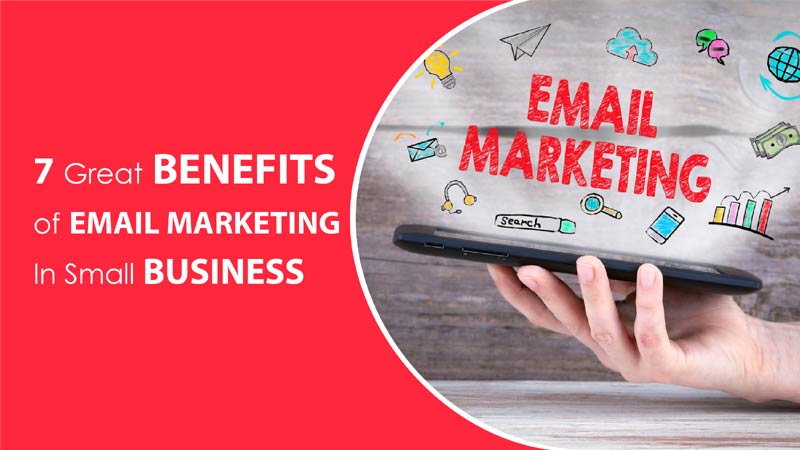Email marketing is one of the fastest-growing trends to generate leads and targeting prospective consumers by using email as the medium of communication with the vision of garnering sales, increasing customer loyalty, or even to communicate any important information. Email marketing is a form of direct marketing, which was commonly used in the past to target groups of people. However, the face of modern email marketing has transformed in many ways and it is based on the principles of consent, segmentation, and personalization.
Email marketing can be closely linked to email advertising and the most important aspect is the cost-effective feature of email marketing, which makes it popular among both big and small businesses. Email marketing is a paperless approach of communicating and advertising to garner the target consumers and a well-drafted email always delivers a positive impact on the consumers, which in turn become regular customers of your brand or company. There are various advantages of email marketing and it is important to get a clear idea of how email marketing works for your business so that using these tactics, the mission of the organization can be achieved.
Email Marketing for Your Business
1. Email is a Most Common and Reliable Channel of Communication
As per the research data, it is known that 99% of people check their emails every day. Therefore, communicating through email regarding the launch of a new product, any update in an existing service, and providing offers on products or services during the festive season can be done at a very low cost, since a well-designed email with all the required information can be delivered to all the target consumers at the same time. This approach also helps to win over customer’s loyalty, as this approach gives them a sense of care from the company, and timely information can always lead to sales increment.
2. Email Marketing Gives the Leverage of Sending Targeted and Personalized Content
Email marketing enables the business to segment prospective consumers into different lists based on their preferences to send highly personalized content. Designing an eye-catching subject with a crisp body-line, email marketing is perfect to drive engagement. Email marketing works by developing a strong foundation of trust between the brand and the recipient, and creating a long-lasting bond with the consumers.
3. Builds Credibility
Email marketing helps businesses to build credibility by creating a mailing list, which is based on permission as it has a checkbox for users to opt-in to the mailing list. Hence, you’re ensuring that a customer knows which emails they’re signing up for, and how often they’ll be receiving emails from the brand or the company.
4. Better Brand Recognition
Email marketing gives a direct path to the customer’s inbox; therefore, it serves to be a pathway in developing the brand identity because delivering valuable and best content can make the brand stay ahead of its competitors also. On the other hand, emails can be the best medium to get feedback from the customers simultaneously.
5. Boost the Sales
Email marketing provides a huge opportunity for impulse buying. Customers can be enticed to make more purchases by offering special offers or discounts for future purchases.
6. Stronger Customer Relationships
It is quite impossible to reach out to each and every customer in person; though, it is important to strengthen the relationship with the customers to expand the business. Therefore, email marketing comes to the rescue by bridging that gap. A drip marketing campaign can be set up to provide constant information and value to subscribers by helping to keep the brand top-of-mind.
7. Optimize Time and Budget
Small businesses mostly have a budget constraint; therefore, designing, printing, and advertising may not fit the budget. But email marketing helps small businesses with efficient usage of their time and budget by designing a professional email marketing campaign, which is not complicated, or time-consuming. Sending emails to many subscribers at the same time is also cost-effective.
8. Increased Traffic to the Website
Emails are the best way to get customers to visit the website. Relevant links to the website can be provided within the email content, and there are high chances that the customers will click on the links out of curiosity to find out more. Also, email campaigns can be used to get the customer’s engagement.
9. Establish Authority
The email content is one of the most important and striking marketing tools, which can be used to build other areas of the marketing strategy as well. Customers sign-up for a company’s newsletter because they want to hear from the company. Hence, delivering emails with appropriate information on a regular interval will help build authority and the customers feel privileged, and in return, they remain engaged with the company with high hopes for the best offers and new products from the company.
10. Build Excitement
Email marketing tend to excite the customers by rewarding the valuable customers with discounts and offers, and designing these mails are never tough as every customer wants to feel special and if the company can afford to provide rewards in the form of free movie tickets on purchase of a certain amount of products, or lucky draw coupons prove an excellent way of gaining more customers. However, small businesses might not be able to go around giving free stuff to the customers, but a little extra effort can go a long way.
11. Email List Remains Forever
Social media marketing at times may not provide fruitful results as there are chances of account suspension or deletion at any time, for any reason, without notice; however, the email list always remains, which makes email marketing a viable option until and unless the customer closes down the email account.
Therefore, email marketing does wonder as the company is able to show the value they are giving to the customers by playing with the words and well-designed email format. It is for sure that the more value a company provides to the target audience, the more they’ll look forward to hearing from the company, and when this stage is crossed, it becomes easier to turn the customers into potential buyers.
This is how email marketing works for your business. If you’ve decided to get started with email marketing for your business, then Digital Catalyst is here for you. Reach us now to know more details.
Key Steps in Email Marketing Strategy for Businesses
| Step | Description |
|---|---|
| 1. Build Your Email List | Collect emails through sign-ups, purchases, and other interactions. Focus on quality and consent for better engagement. |
| 2. Segment Your Audience | Divide your email list based on demographics, behavior, or purchase history to tailor your messages effectively. |
| 3. Create Compelling Content | Develop engaging and relevant content that adds value to your subscribers. Include calls-to-action to guide reader behavior. |
| 4. Design Your Email | Use a responsive design that works on all devices. Keep the layout simple and the message clear. |
| 5. Test and Optimize | Conduct A/B testing on subject lines, content, and send times to determine what works best for your audience. |
| 6. Send and Monitor | Choose the right time to send your emails. Use analytics to monitor opens, clicks, and conversions, and adjust strategies as needed. |
| 7. Nurture and Follow Up | Keep engaging with your audience by sending follow-up emails based on their interactions. Build long-term relationships. |
FAQs on Email Marketing Works for your Business
What is a good email open rate in 2025?
An average open rate of around 20% is considered good. However, the open rate might vary between industries and the email database/list quality. It also depends on the relevance of your content and other factors. The email open rates are generally high for transactional emails, emails related to non-profits, and hobby content. Promotional emails have one of the lowest open rates. Newsletters also have an excellent open rate.How often should you send emails to your subscribers?
The frequency of email campaigns might vary based on the audience and goals you want to achieve. It is recommended that one should send not more than one email/per week to their subscribers. More than one might overwhelm the subscribers.How do I measure the success of my email marketing campaign?
To measure the success of your email marketing campaigns, try tracking below metrics –- Open Rate
- Click-Through Rate (CTR)
- Conversion Rate
- Bounce Rate
- Unsubscribe Rate
- Revenue Generated
- Forward Rate




